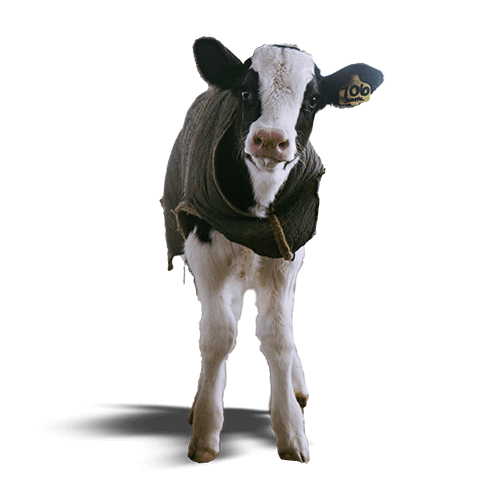Puppy care
It is so exciting to bring home your brand new puppy. You can pick up on of our Glen Veterinary Puppy Packs at our clinic. Here are some links to handy resources:
Puppy Milestones
Free Pet Exam
Sign up below and receive your free pet exam when your first visit us at Glen Veterinary.
Puppy checklist / shopping list
✓ An appropriately sized crate. Dogs love the comfort and security offered by a place of their own. The crate should allow your puppy enough space to stand up, turn around and lie down. A larger space may encourage bad toilet habits.
✓ A comfortable bed. Should be durable and washable. Be aware that a soft bed can become a chew target.
✓ Stair gates. To help confine your puppy and prevent them from entering rooms that are not puppy-proof.
✓ Dog chew toys. A new puppy will chew anything, so make sure you have plenty of dog toys and always offer a toy when you catch them chewing on something they shouldn’t.
✓ Collar and lead. Introduce your puppy to their collar and lead as soon as possible and let them practice wearing it in the house. Don’t drag your puppy. Allow them to move at their own pace.
✓ Bitter apple spray. Almost all household items that cannot be removed or puppy-proofed can be sprayed with this. The unpleasant odour is unappealing to dogs. Humans cannot smell it.
✓ Puppy food and bowls. Puppies need to eat about three times a day and require a bowl of fresh water nearby. Purchase high-quality pet food and use stainless steel dog bowls as they collect less bacteria than plastic ones.
✓ An enzyme cleaner. During toilet training accidents will occur. Enzyme cleaners will eliminate the odour that your dog can smell which can encourage them to go again.
✓ Grooming equipment. Introducing your puppy to grooming from a young age will help them to tolerate and even enjoy it in the future. Regular brushing and washing will help to keep your dogs coat healthy. Learning to cope with ear cleaning, nail clipping and teeth brushing will also help your puppy as they grow and mature.
✓ Identification. Your puppy will require some identification should they ever get lost. An ID tag for your puppys collar containing your phone number and a microchip implant with your up to date contact details on the register will help to reunite you.
What food and how to choose
When your puppy moves to their new home it is important not to make huge diet changes as this can upset their tummy. Many breeders will tell you what they have been feeding your dog and you should continue with this while gradually introducing the food you wish to feed them in small stages over a week or so.
There are a number of diets available for dogs and it can be confusing when trying to choose one suitable for your puppy. It’s important to remember all dogs are individuals, and what diet is suitable for one dog may not be appropriate for another. When choosing a food, it is important to choose one that is both complete and balanced. The 'premium' dry foods tend to have the highest quality ingredients. Although these foods may appear more expensive to buy, you do not need to feed the large amounts you would with a lower grade food, so many of them actually work out to cost the same, if not less!
A good quality, dry kibble with high digestibility means that your puppy will get all the nutrients they need for growth and development. Life stage is very important and therefore a puppy nut should be fed until your pet is fully grown. Small or medium breed dogs are generally deemed to be ’adults’ from 12 months of age, whereas larger breed dogs take a little longer and don’t really become ‘adults’ until 18–24 months.
Raw diets are not recommended for very young pups as they don’t have the immune system development to cope with a high bacterial load. It is also very difficult to balance a raw diet for growing puppies.
Puppies have a high nutritional demand and can’t go for long without food. It’s very important to feed small meals regularly. The amount of food your dog needs will largely depend on the size, breed and age of your dog, as well as how regularly it exercises. The key is to ensure you don’t overfeed or underfeed your dog. If ever you’re unsure, ask your vet to assess your dog’s diet and nutrition, and the condition of its body and overall health.
Always ensure your dog is well hydrated. This means making sure their water bowl is filled up at all times and is changed daily, so they can help themselves to water whenever they need or want it.
The following foods can be toxic to your puppy:
Onions, garlic, chocolate, milk products, raisins, grapes, bones, or fatty foods
Training Advice
Do
✓ Keep sessions short
✓ Repeat often
✓ Reward good behaviour
✓ Be patient and consistent
✓ Ignore bad behaviour
✓ Start early
✓ Expose your puppy to many different situations (dogs, people, places, sounds…)
✓ Reward them when they respond well to new situations
✓ Consider puppy classes
Don’t
✗ Use physical punishment
✗ Shout
✗ Punish after the event – your puppy will not remember
✗ Confuse them – decide the house rules and stick to them
House training
House training your puppy is about consistency, patience, and positive reinforcement. The goal is to instill good habits and build a loving bond with your pet.
It typically takes 4-6 months for a puppy to be fully house trained, but some puppies may take up to a year. There are many factors that affect house training, for example, smaller breeds have smaller bladders and require more trips outside. A puppy's previous living conditions may require you to break old habits too.
During training, don’t worry if there are accidents. As long as you continue a program that includes taking the puppy out at the first sign they need to go and offering them rewards and encouragement, they will learn.
Top house-training tips
« Begin house training your puppy between 12 and 16 weeks of age
« Stick to a regular feeding pattern taking away food between meals
« Take your puppy outside first thing in the morning and then once every 30 minutes to an hour to begin with
« Take them outside after meals or when they wake from a nap
« Ensure that they are taken outside before being left alone and last thing at night
« Take your puppy to the same spot each time. Their scent will prompt them to go.
« Stay with your puppy outside, at least until he’s house trained.
« When your puppy goes to the toilet outside, praise them and give them lots of attention
« If your puppy is whining, circling, sniffing, barking, or scratching at the door, take them outside
« Clean up accidents with an enzymatic cleaner to minimise odors that might attract the puppy back to the same spot
Puppies and Children
It’s wonderful to see children and dogs grow up together and the benefits for both can be huge. It can however be challenging at times trying to manage a puppy and young children and ensure that everyone is kept happy and safe. Crawling babies and toddlers can be very exciting for puppies, but they can also be very overwhelming. Squealing, pulling, and rough play can be scary to a young puppy and often dogs will tolerate a lot of discomfort before showing any signs. Most children who are bitten by dogs are bitten by dogs that they know, so it really pays to spend time ensuring that both grow up knowing how to behave around one another so that they ca go on to enjoy a lifetime of friendship together.
Signs that your puppy is feeling distressed:
Avoidance or moving away
hiding
tail tucked under
looking away
appearing ‘smaller’
lip licking or yawning (when not sleepy)
paw raising
growling
flashing teeth
snapping
biting
DO
✓ Supervise all interaction between your child and puppy
✓ Separate your puppy from children when they are eating or chewing
✓ Pick up your puppy’s toys when they have finished playing as this stops your children picking them up
✓ Teach your pup that that their crate is a safe haven for them to retreat to
✓ Encourage gentle interaction from your children – no pulling or grabbing at the puppy. This will teach your child how to act sensibly around all dogs
✓ Let your puppy sleep undisturbed
Equally, if you see your child becoming frightened or frustrated by your puppy, intervene. Young children can easily become irritated by a puppy, especially if the puppy plays with their toys. It’s much safer for both if you remove the puppy and give them something else to do. This will ensure that their relationship stays on track.
Responsible ownership
6. Feed the right food
7. Train your pet well
8. Dental care is vital
9. Exercise for life
10. Have fun
1. Annual health assessment and vaccinations
2. Neutering
3. Prevent worms and fleas
4. Microchip and identification
5. Pet health insurance












